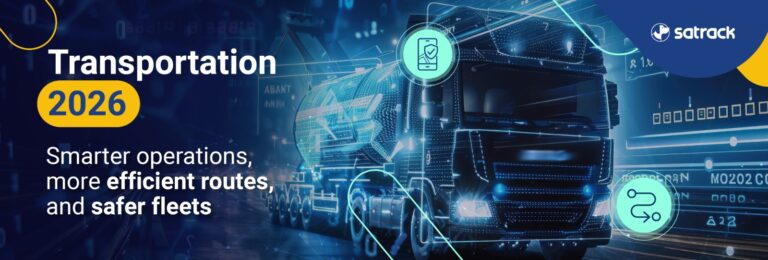
Effective asset management is crucial for businesses of all sizes. Our comprehensive GPS tracking solutions empower you to:
Monitor asset location: Track the whereabouts of your assets in real-time, ensuring they’re always where they need to be.
Prevent theft and loss: Mitigate the risk of asset theft or misplacement with proactive alerts and recovery capabilities.
Optimize asset utilization: Gain insights into asset usage patterns to optimize resource allocation and reduce downtime.
Streamline asset maintenance: Schedule preventive maintenance based on actual asset usage, extending asset lifespan and reducing costs.
Enhance operational efficiency: Improve overall operational efficiency by streamlining asset tracking and management processes.
Our GPS tracking solutions are designed to seamlessly integrate with your existing business systems, providing a centralized platform for comprehensive asset management.
In today’s dynamic and data-driven world, businesses across industries constantly seek innovative solutions to optimize operations, enhance efficiency, and safeguard their valuable assets. GPS asset tracking has emerged as a transformative technology, empowering organizations to gain unprecedented visibility and control over their assets, transforming the way they manage and protect their resources.
GPS asset tracking, also known as GPS asset management or GPS fleet tracking, utilizes the Global Positioning System (GPS) to monitor and track the location and movement of physical assets in real time. By integrating GPS technology with specialized tracking devices, businesses can pinpoint the whereabouts of their assets, whether they are vehicles, machinery, equipment, containers, or even livestock.
The integration of GPS asset tracking systems allows businesses to collect and analyze vast amounts of data related to their assets’ location, movement, and utilization. This data-driven approach provides valuable insights to drive strategic decision-making, optimize asset usage, and enhance operational efficiency.
In today’s dynamic business landscape, effective asset management is essential for success. Our cutting-edge GPS tracking solutions empower you to reap a multitude of benefits, including:
Our GPS tracking solutions seamlessly integrate with your existing business systems, providing a centralized platform for comprehensive asset management. Learn more about the benefits of GPS tracking from this comprehensive guide on GPS tracking.
Implementing GPS asset tracking solutions offers many benefits that can transform business operations and drive significant value for organizations. These benefits include enhanced visibility, reduced theft, optimized utilization, streamlined maintenance, improved efficiency, and better decision-making.
GPS tracking provides real-time visibility into the location and movement of assets, enabling businesses to monitor their assets’ whereabouts at any moment. This real-time data stream eliminates asset location guesswork and provides a comprehensive overview of asset utilization. Enhanced visibility allows businesses to make informed decisions, improve resource allocation, and respond quickly to changing circumstances.
GPS asset tracking data empowers businesses to optimize asset utilization by identifying underutilized or idle assets and reallocating them to areas where they are most needed. This data-driven approach ensures that assets are deployed efficiently, maximizing their return on investment (ROI). By leveraging real-time tracking information, businesses can avoid unnecessary asset purchases and reduce operational costs.
GPS asset tracking can lead to significant cost savings by optimizing asset utilization and streamlining logistics. Businesses can reduce fuel consumption, minimize maintenance downtime, and optimize route planning, resulting in a leaner and more cost-effective operation. Tracking assets in real-time enables businesses to detect inefficiencies and promptly implement corrective measures.
GPS tracking serves as a powerful deterrent against asset theft and unauthorized usage. By alerting businesses to asset movement outside designated areas or predefined geofences, GPS tracking enables timely intervention and recovery of stolen or misplaced assets. The enhanced security provided by GPS asset tracking systems helps protect valuable assets and reduces the risk of financial losses due to theft or misplacement.
GPS tracking data can be leveraged to implement predictive maintenance strategies, anticipating potential asset issues before they escalate into significant breakdowns. Businesses can proactively schedule maintenance and repairs by monitoring asset performance and usage patterns, minimizing downtime, and extending asset lifespan. Predictive maintenance helps reduce unexpected failures and ensures that assets operate efficiently.
GPS tracking can enhance safety measures by monitoring driver behavior and identifying risky driving patterns, such as speeding, harsh braking, or erratic maneuvers. This data can be used to implement driver training programs and promote a safe driving culture, reducing accident risks and associated costs. Additionally, GPS asset tracking helps businesses comply with industry regulations and standards related to asset management and transportation.
GPS tracking plays a crucial role in ensuring compliance with regulatory requirements in various industries. For instance, transportation companies can use GPS tracking to demonstrate adherence to Hours of Service (HOS) regulations, while environmental organizations can track the movement of hazardous materials to comply with environmental safety standards. Compliance with regulations helps businesses avoid legal penalties and maintain a positive reputation.
The image showcases a ferry transporting various vehicles, highlighting the diverse applications of GPS asset tracking. These solutions go beyond simple location tracking, helping businesses across industries optimize their operations.
Unlocking Efficiency with GPS Asset Tracking Applications:
Transportation and Logistics: The ferry in the image exemplifies how GPS tracks vehicles, trailers, and containers, optimizing delivery routes, reducing fuel costs, and ensuring on-time arrivals.
Construction: Construction sites utilize GPS to monitor heavy machinery, tools, and equipment, preventing theft, maximizing utilization, and streamlining project schedules.
Agriculture: Farms leverage GPS to track livestock, irrigation equipment, and vehicles, optimizing land use, enhancing agricultural productivity, and monitoring animal well-being.
Retail: High-value inventory and assets can be tracked within stores or across locations, preventing theft, minimizing shrinkage, and optimizing stock replenishment.
Rental Equipment: Rental companies utilize GPS to track equipment usage and location, ensuring timely returns, preventing unauthorized use, and maximizing rental revenue.
GPS asset tracking offers a multitude of benefits for businesses of all sizes, including:
Embrace the power of GPS asset tracking and gain a competitive edge in your industry.
GPS asset tracking finds wide-ranging applications across diverse industries, including:
GPS tracking is indispensable for fleet management, enabling real-time tracking of vehicles, optimizing delivery routes, and monitoring driver behavior. Transportation companies can enhance operational efficiency, reduce fuel consumption, and improve customer satisfaction by ensuring timely deliveries. GPS asset tracking also provides valuable data for route optimization and logistics planning.
GPS tracking ensures the efficient movement of heavy machinery, equipment, and vehicles on construction sites and mining operations. By monitoring asset locations and usage, construction and mining companies can improve project management, reduce equipment downtime, and enhance overall productivity. GPS asset tracking also helps prevent equipment theft and unauthorized use.
GPS tracking systems monitor the movement of farm equipment, livestock, and irrigation systems, optimizing agricultural operations and enhancing resource management. Farmers can track the location and status of their assets, streamline field operations, and ensure the efficient use of resources such as water and fertilizers. GPS asset tracking also aids in precision agriculture practices.
GPS tracking provides visibility into the movement of goods and inventory throughout the supply chain, streamlining logistics and preventing stockouts. Retailers and supply chain managers can track shipments in real-time, reduce transit times, and ensure the timely delivery of products. GPS asset tracking helps improve inventory management and reduces the risk of lost or misplaced goods.
GPS tracking tracks the location of oil and gas assets, including pipelines, tankers, and drilling equipment, ensuring operational efficiency and safety. By monitoring asset movements and conditions, oil and gas companies can prevent equipment failures, reduce downtime, and enhance worker safety. GPS asset tracking also helps manage remote and hazardous operations effectively.
Utilities and public service providers use GPS tracking to monitor and manage their assets, such as utility vehicles, maintenance equipment, and infrastructure components. GPS asset tracking helps improve service delivery, reduce response times, and enhance the reliability of public services. Utility companies can also track the condition and maintenance needs of critical infrastructure assets.
The successful implementation of GPS asset tracking involves several key steps:
Clearly identify the specific objectives and desired outcomes of implementing GPS asset tracking. Determine what assets need to be tracked, the information required, and how the data will be used to achieve business goals. Setting clear goals helps ensure that the GPS tracking system aligns with organizational needs and delivers the expected benefits.
Choose GPS tracking devices that align with the specific asset types, tracking requirements, and environmental conditions. Consider factors such as battery life, durability, connectivity options, and additional features like geofencing and sensor integration. Selecting the right devices ensures accurate and reliable tracking data.
Properly install and configure GPS tracking devices on the designated assets, ensuring data accuracy and connectivity. Follow manufacturer guidelines and best practices for installation to avoid potential issues. Proper configuration ensures the tracking devices provide accurate location data and integrate seamlessly with the tracking software.
Select a robust GPS tracking software platform that offers user-friendly interfaces, data visualization tools, and advanced analytics capabilities. The software should support real-time tracking, historical data analysis, and customizable reporting features. A reliable software platform enhances the usability and effectiveness of the GPS asset tracking system.
Integrate the GPS tracking system with existing business systems, such as ERP or fleet management software, for a holistic view of operations. Seamless integration allows for the consolidation of asset data and improves overall operational efficiency. Ensure that the tracking system can exchange data with other enterprise systems to support comprehensive asset management.
Provide comprehensive training to employees responsible for using and interpreting GPS tracking data. Training should cover system functionality, data interpretation, and best practices for asset management. Educating users ensures they can effectively leverage GPS tracking data to achieve business objectives.
Implement robust data security measures to protect sensitive asset information and comply with data privacy regulations. Ensure that GPS tracking data is encrypted, access is restricted to authorized personnel, and data storage meets industry standards. Protecting data integrity and confidentiality is crucial for maintaining trust and compliance.
Review and evaluate the effectiveness of the GPS asset tracking system regularly, making adjustments as needed to optimize performance and achieve desired outcomes. Continuously monitor key performance indicators (KPIs) and gather user feedback to identify improvement areas. Regular evaluation ensures that the tracking system remains aligned with evolving business needs.
GPS asset tracking has revolutionized the way businesses manage and protect their assets. GPS tracking systems deliver substantial benefits across various industries by providing real-time visibility, enhancing asset utilization, reducing operational costs, and improving security. The ability to monitor assets in real time and make data-driven decisions empowers organizations to optimize their operations and achieve greater efficiency.
Implementing a successful GPS asset tracking system involves defining clear goals, selecting appropriate devices, configuring and integrating the system, training users, and ensuring data security. By following these steps and continuously refining the system, businesses can maximize the value of their GPS asset tracking investments and stay ahead in a competitive landscape.
As technology continues to evolve, the capabilities of GPS asset tracking systems will expand, offering even more advanced features and functionalities. Businesses that embrace GPS tracking technology will be well-positioned to leverage these innovations and drive future success. The future of asset management lies in the power of GPS tracking, transforming how organizations monitor, manage, and protect their valuable resources.
